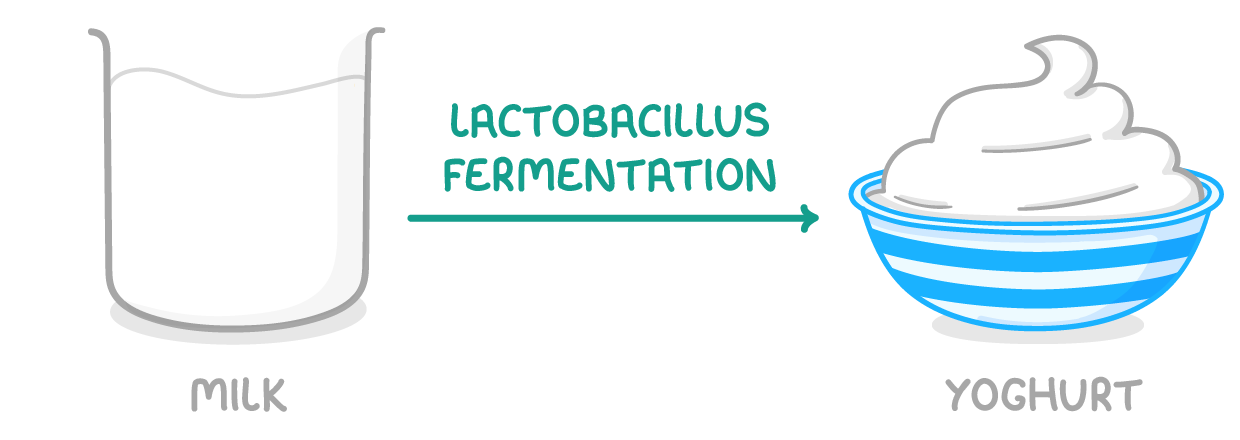Bacteria & Making Yogurt
This lesson covers:
- How microorganisms can be used in food production
- How bacteria are used to make yoghurt
The role of microorganisms in food production
Microorganisms, such as bacteria and yeast, can be used in food production in a variety of ways.
- Bacteria are used to ferment dairy products, such as yoghurt and cheese, and also to produce vinegar.
- Yeasts are used to bake bread and brew beer.
- Some microorganisms can be used to produce food additives, such as flavourings.
Yoghurt is a product of milk fermentation by the bacterium Lactobacillus

Lactobacillus uses the lactose in milk as its substrate for anaerobic respiration, converting it into lactic acid and releasing energy in the process. The resulting lactic acid is what contributes to the distinctive taste and texture of yoghurt.
How yoghurt is made
- All equipment is sterilised to kill unwanted microorganisms and prevent contamination.
- The milk is pasteurised at 72°C for 15 seconds to kill any harmful microorganisms.
- The milk is cooled and Lactobacillus bacteria is added.
- The mixture is incubated at 40-45°C for several hours. During this time the Lactobacillus bacteria ferment the lactose in the milk.
- The Lactobacillus bacteria convert the lactose into lactic acid, which sours and thickens the milk, forming yoghurt.
- The yoghurt is then stirred and cooled - halting the action of the Lactobacillus bacteria.
- Flavourings, colorants, and fruit may be added before packaging.
What is yoghurt made from?
Soybeans
Milk
Rice
Wheat
|
Which type of respiration does Lactobacillus utilize in the process of making yogurt?
Aerobic respiration
Anaerobic respiration
Photosynthesis
|
What is the purpose of sterilising equipment in the process of making yoghurt?
(Select all that apply)
To kill unwanted microorganisms
To prevent chemical contamination
To cool the milk
To pasteurise the milk
|
At what temperature is the milk pasteurised in the process of making yoghurt?
55°C
40°C
72°C
100°C
|
In yoghurt production, what is the substrate used by Lactobacillus for anaerobic respiration?
Lactose
Fructose
Maltose
Sucrose
|